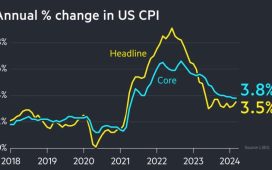Goldman Sachs says it aims to provide “best-in-class investment advice to clients, consistent with both the letter and the spirit of all applicable tax laws and regulations”.
So the bank was quick to say that it would change its trading practices after a media organisation claimed it had helped former Microsoft boss Steve Ballmer subvert at least the spirit of US laws against so-called ‘wash sales’.
Investors will be familiar with the idea of tax loss harvesting: selling an underperforming stock to crystallise a loss that can be offset against capital gains elsewhere, to lower one’s overall tax bill. It’s common practice to prune a few losers before the end of the tax year. But you can’t simply buy the same stock back and still claim the deduction. It really has to be kicked out of your portfolio.
However, in February, ProPublica reported that Ballmer, through his investment management account at Goldman, had sold shares in the dual-listed natural resources giants Shell and BHP, then replaced them on the same day with identical amounts of the other class of the companies’ shares, and claimed a chunky deduction.
Under US law, a wash sale is defined as one where the investor makes a “substantially identical” purchase within 30 days. Goldman told the FT it would halt repurchase transactions involving dual-class shares and had alerted clients to the mistake. A spokesperson said the affected trades were very small in number. Ballmer told ProPublica that he would amend his tax filings.
But the biggest impact from ProPublica’s investigation may not be the tweaks to Goldman clients’ tax filings. It may instead be the spotlight it shines on the explosive growth of tax harvesting strategies. The use of dual-class share replacements was a tiny part of what Goldman’s investment managers achieved for Ballmer, who netted an extraordinary $579mn in tax loss harvesting over five years, according to ProPublica’s calculations.
And this is not a billionaire-only game. Far from it. Tax loss harvesting has been mechanised thanks to the collapse in trading costs and the rise of so-called direct indexing. Investors can acquire algorithmically-controlled portfolios of hundreds of stocks that are built to track a broad stock market index but are also programmed to sell lossmaking shares throughout the year to crystallise tax losses and replace them with alternative investments to keep the portfolio on track.
A pioneer of the strategy, Parametric, was purchased by Morgan Stanley after a bidding war in 2020. Rival JPMorgan eventually bought another platform called 55ip, and the two wealth managers have put their tax-loss harvesting products at the centre of a fierce price war. Market research sponsored by Parametric suggests direct indexing could account for $800bn in assets by 2026.
Academic studies show the strategy can add 1 to 2 per cent a year in after-tax returns to a diversified equity portfolio, and can even be used to give a boost to fixed income portfolios. Marketing materials from the investment manager Northern Trust demonstrate how sophisticated the products have become: it says the tax losses can be dialled up or down depending on how much deviation from the underlying index an investor is willing to risk. NT did not respond to a request for comment.
There is no suggestion that any of these platforms engage in illegal wash sales by using substantially identical replacements. That’s the point. They don’t have to. But algorithms can be programmed to go more or less close to the line.
So it wouldn’t surprise me if authorities were tempted to move the line, and toughen the rules. The word “substantially” could be made to do a lot of work.
The Internal Revenue Service hasn’t provided much in the way of guidance about what “substantially identical” means in modern markets, with the result that different advisers take more or less conservative positions.
In a piece on the “silver lining” of tax loss harvesting opportunities in the down market of 2022, Morningstar warned investors against replacing an exchange-traded fund with another that tracked the same index, even if it was run by a different asset manager.
“It’s probably safest to replace fund holdings with a vehicle that tracks a different index,” Morningstar strategist Amy Arnott wrote. “For example, an investor selling the Vanguard 500 index fund, which tracks the S&P 500, could replace it with the Vanguard Total Stock Market index fund, which tracks the broader CRSP Total Market Index.”
Tax authorities could also squeeze investors in a variety of other ways that raise the costs or risks of the strategy — by making investment advisers liable for the violations of their clients, or just by subjecting more users of tax-loss harvesting strategies to gruelling audits. The IRS has just had $80bn added to its budget and is itching to spend it.
The nuclear option would be for the US Congress to step in. David Schizer, tax professor at Columbia Law School, told ProPublica that the law should be rewritten to change “substantially identical” to “substantially similar”.
Individual investors obviously don’t want to lose the better after-tax returns they can enjoy thanks to the mechanisation of tax-loss harvesting. But, if it substantially erodes the tax base, politicians will only be encouraged to find new taxes elsewhere to crimp investors’ returns by other means — like the new US tax on share buybacks, for example. That really would be a wash.
This article is part of FT Wealth, a section providing in-depth coverage of philanthropy, entrepreneurs, family offices, as well as alternative and impact investment
The article has been amended since publication to clarify that trades on Ballmer’s account were done by Goldman’s investment managers.











